I'm trying to draw squiggle in Set Card Game. The output is not even close to what I want. How should I improve the drawing?
- Please ignore the shading in "What I want" picture. I have figured out how to do that. The question is how to drawing the shape of squiggle
- The purpose of this is to practice drawing with objective-c. So just using png picture is not a solution here...
..
#define SQUIGGLE_CURVE_FACTOR 0.5
- (UIBezierPath *)drawSquiggleAtPoint:(CGPoint)point
{
CGFloat dx = self.bounds.size.width * SYMBOL_WIDTH_RATIO / 2;
CGFloat dy = self.bounds.size.height * SYMBOL_HEIGHT_RATIO / 2;
UIBezierPath *path = [[UIBezierPath alloc] init];
CGFloat dsqx = dx * SQUIGGLE_CURVE_FACTOR;
CGFloat dsqy = dy * SQUIGGLE_CURVE_FACTOR;
[path moveToPoint:CGPointMake(point.x - dx, point.y)];
[path addQuadCurveToPoint:CGPointMake(point.x - dsqx, point.y + dsqy) controlPoint:CGPointMake(point.x - dx, point.y + dy + dsqy)];
[path addCurveToPoint:CGPointMake(point.x + dx, point.y) controlPoint1:point controlPoint2:CGPointMake(point.x + dx, point.y + dy * 2)];
[path addQuadCurveToPoint:CGPointMake(point.x + dsqx, point.y - dsqy) controlPoint:CGPointMake(point.x + dx, point.y - dy - dsqy)];
[path addCurveToPoint:CGPointMake(point.x - dx, point.y) controlPoint1:point controlPoint2:CGPointMake(point.x - dx, point.y - dy * 2)];
return path;
}
- What I got:
- What I want:
final version
- (UIBezierPath *)drawSquiggleAtPoint:(CGPoint)point
{
CGSize size = CGSizeMake(self.bounds.size.width * SYMBOL_WIDTH_RATIO, self.bounds.size.height * SYMBOL_HEIGHT_RATIO);
UIBezierPath *path = [[UIBezierPath alloc] init];
[path moveToPoint:CGPointMake(104, 15)];
[path addCurveToPoint:CGPointMake(63, 54) controlPoint1:CGPointMake(112.4, 36.9) controlPoint2:CGPointMake(89.7, 60.8)];
[path addCurveToPoint:CGPointMake(27, 53) controlPoint1:CGPointMake(52.3, 51.3) controlPoint2:CGPointMake(42.2, 42)];
[path addCurveToPoint:CGPointMake(5, 40) controlPoint1:CGPointMake(9.6, 65.6) controlPoint2:CGPointMake(5.4, 58.3)];
[path addCurveToPoint:CGPointMake(36, 12) controlPoint1:CGPointMake(4.6, 22) controlPoint2:CGPointMake(19.1, 9.7)];
[path addCurveToPoint:CGPointMake(89, 14) controlPoint1:CGPointMake(59.2, 15.2) controlPoint2:CGPointMake(61.9, 31.5)];
[path addCurveToPoint:CGPointMake(104, 15) controlPoint1:CGPointMake(95.3, 10) controlPoint2:CGPointMake(100.9, 6.9)];
[path applyTransform:CGAffineTransformMakeScale(0.9524*size.width/100, 0.9524*size.height/50)];
[path applyTransform:CGAffineTransformMakeTranslation(point.x - size.width/2 - 3 * size.width /100, point.y - size.height/2 - 8 * size.height/50)];
return path;
}
